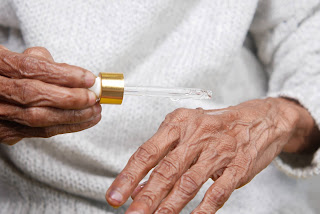Do you know what to do if your baby got a febrile fit?
Do you know what to do if your baby got a febrile fit?
Today we'll discuss febrile fits / febrile convulsions in children.
What is febrile fit or convulsion ?
Before we talk about febrile fits we will get to know about what is fit. Usually, our body movements are controlled by our brains. First, we think about some body movement and then our brain sends a message to the responsible muscle to work via nerves.
What happens during a fitting episode is our brain functioning gets abnormal for a short period of time. Then the brain sends messages to muscles without our knowledge. Then those muscles get contracted leading to visible jerky body movements. As brain functioning gets abnormal most of the time consciousness is also affected. These sometimes get resolved spontaneously.
When this type of fitting episode occurs with the fever we call it a febrile convulsion. But most importantly there should not be any evidence of brain infection.
What are the common causes of fits?
1. hypoglycemia
When blood sugar levels are very low our brain couldn't function normally. This can lead to fits.
2. Brain infection (meningitis/ encephalitis)
When bacteria or viruses or other germs invade the brain our brain can't function normally. This is a life-threatening condition and specialized medical care is essential.
3. Electrolyte imbalances
Our normal brain functioning needs several electrolytes such as sodium, potassium, calcium, and magnesium.
4. Simple Fever
We call these fits febrile convulsions.
5. Genetics and the inherent tendency of the brain to have an episodic malfunctioning
We call this epilepsy. Most of the time it occurs without a fever.
How to differentiate simple febrile convulsion from brain infection?
Most of the time simple febrile convulsions are innocent but fits due to brain infections are lethal. In a brain infection baby is always sleepy and ill-looking. They will have difficulty in neck movements (neck stiffness), difficulty looking at lights (photophobia), and tolerating sounds (phonophobia). Blood investigations like full blood count and CRP will show evidence of infection. There is a test called "lumber puncture" which will tell us whether germs are in the brain or not.
Can any child get febrile convulsions?
Usually, febrile convulsions occur between the age of 6 months and 6 years. Most of the time if one family member has fits others also can have fits as genetics carry the tendency for convulsions.
What to do if the baby got a febrile convulsion?
The most important thing is to keep the airway patent so the baby can breathe during fits. Most of the time there will be frothing of saliva with fits. If the baby is in a supine position this saliva can enter the lungs. Therefore keep the baby in the left lateral position or prone position. Then take the baby to the nearest hospital. Don't put anything in the baby's mouth. If a baby is having recurrent febrile convulsions you can give drugs like clobazam to reduce the tendency to have fits with fever but it won't assure that the baby will not develop fits with fever.
What is the prognosis of febrile convulsions.?
Usually, febrile convulsions will not occur after the age of 6 years. But some can develop epilepsy later in life if they are having the following risk Factors.
1. child is less than 12 months of age
2. prolonged fits lasted more than 30 minutes
3. There are more than three episodes
4. Febrile convulsions present in first-degree relatives
How to treat febrile convulsions..?
The first step is to control the convulsion. In some cases convulsion spontaneously resolved within five minutes. If it doesn't resolve drugs like midazolam, phenytoin, and phenobarbitol will be injected into the bloodstream. The last option for uncontrollable convulsion is general anesthesia.
The second step is to treat the cause of the fever.
Take home message
DON'T PANIC. KEEP THE BABY IN THE LEFT LATERAL POSITION AND TAKE THE BABY TO THE NEAREST HOSPITAL.







Comments
Post a Comment